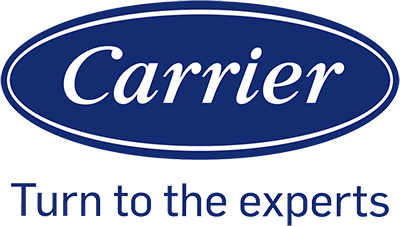When we think about keeping our homes comfortable, the focus often lands on the thermostat or the HVAC unit itself. What we often overlook is the role of the air ducts. Clean ducts allow air to move freely, which helps the HVAC system run more efficiently and keeps indoor air healthier.

Dirty ducts can cause the system to work harder than it should, leading to higher energy bills and more wear on the equipment. Dust, debris, and buildup inside the ducts also affect the air we breathe every day. By addressing the condition of our ducts, we can improve both performance and comfort.
As we explore how clean ducts impact system efficiency, indoor air quality, and long-term costs, we will also share practical steps for keeping them in good shape. This makes it easier to get the most from our HVAC system without unnecessary strain or expense.
The Direct Impact of Clean Ducts on HVAC System Performance
Clean ducts allow our HVAC system to operate with less strain, keep airflow steady, and help heating and cooling systems maintain consistent temperatures. They also reduce unnecessary wear, which supports longer system lifespan and fewer repair needs.
How Clean Ducts Improve Airflow and System Efficiency
When ducts are free of dust and debris, air can move through the system without blockages. This steady airflow allows the HVAC system to deliver heating or cooling more evenly across all rooms.
Restricted ducts force the blower motor to work harder. That extra strain lowers HVAC efficiency and increases energy use. Clean ducts reduce this resistance, which helps the system reach the set temperature faster.
We can also see fewer pressure imbalances in the ductwork. Balanced airflow keeps the system from short cycling or running longer than needed. This balance supports better system performance while keeping energy costs stable.
Effects on Temperature Regulation and Comfort
Clean ducts help distribute conditioned air evenly, which improves temperature regulation. When airflow is blocked by buildup, some rooms may feel warmer or cooler than others. Removing those obstructions makes indoor comfort more consistent.
Heating and cooling systems rely on steady airflow to match thermostat settings. If ducts remain dirty, the system may struggle to maintain the chosen temperature. This often leads to longer run times and uneven results.
With clean ducts, we notice fewer hot or cold spots in the home. The system can respond more quickly to changes in thermostat settings, which creates a more comfortable living space without overworking the unit.
Role in Reducing System Wear and Extending Lifespan
When the HVAC system works against clogged ducts, parts like the blower motor and compressor face added stress. This stress can shorten the HVAC system lifespan and increase the need for repairs.
Clean ducts allow the system to run under normal conditions. Less strain on moving parts means fewer mechanical failures and reduced risk of overheating.
By lowering wear, we help extend the useful life of both heating and cooling systems. Regular duct cleaning also supports lower maintenance costs over time, since fewer breakdowns occur when airflow stays unobstructed.
Enhancing Indoor Air Quality and Health Through Duct Cleaning
Clean air ducts help us reduce harmful particles in our homes, lower the spread of allergens, and support healthier breathing. By addressing dust, mold, and other debris, we create a safer environment for people with allergies, asthma, or other respiratory concerns.
Reducing Allergens and Respiratory Issues
When dust and debris build up in our ducts, they circulate through the air each time the system runs. This constant movement of particles can irritate our lungs and cause coughing, sneezing, or congestion.
Common allergens found in ducts include:
- Pollen carried indoors from open windows or clothing
- Pet dander from cats, dogs, or other animals
- Dust mites that thrive in warm, dusty areas
By cleaning ducts, we limit how much of these allergens move through the air. This helps us breathe easier and lowers the chance of flare-ups for people with sensitive airways. Even those without diagnosed conditions may notice fewer issues like dry throat, itchy eyes, or mild breathing discomfort.
Keeping ducts clean also reduces the strain on our HVAC system. When the air is free of heavy dust and debris, the system does not have to work as hard to maintain airflow. This supports both cleaner air and more consistent comfort indoors.
Impact of Dust, Mold, and Debris on Air Quality
Dust, mold spores, and other particles in ducts directly affect indoor air quality. When these materials collect, they create environments where bacteria and fungi can grow. Over time, this growth may release odors or harmful particles into the air we breathe.
Mold is especially concerning because it can spread quickly in damp ducts. Moisture from leaks or condensation allows mold colonies to form, and once spores enter the airflow, they can reach every room.
Dust and debris also reduce air quality by carrying chemicals, dirt, and fibers. These particles may not always cause illness, but they can lower comfort and make spaces feel less clean. Regular duct cleaning removes these materials before they spread further.
By addressing these contaminants, we maintain healthier indoor environments and reduce the sources of poor air quality at home or work.
Benefits for Allergy and Asthma Sufferers
People with allergies or asthma are more sensitive to airborne particles. Clean air ducts reduce exposure to triggers like pollen, dust, and pet dander, making it easier for them to manage symptoms.
For allergy sufferers, fewer allergens in the air often means less sneezing, watery eyes, and skin irritation. For those with asthma, removing dust and mold spores can lower the chance of wheezing or shortness of breath.
A clean system also helps keep medications and treatments more effective. When the air is cleaner, people may not need to rely as heavily on inhalers or allergy relief products.
Families with children, elderly members, or anyone with chronic respiratory issues benefit most from clean ducts. By keeping the system free of buildup, we create an environment that supports healthier breathing and better daily comfort.
Energy Efficiency and Cost Savings from Clean Ducts
When we keep our ducts clean, our HVAC system can move air more easily. This reduces wasted energy, lowers costs, and helps our equipment last longer. Clean ducts also support better long-term value from our HVAC investment.
Lowering Energy Bills and Costs
Clean ducts improve airflow, which means our AC and furnace do not have to run as long to reach the set temperature. This lowers the amount of electricity or gas used during daily operation.
Even small improvements in efficiency can add up. For example:
| Condition | Energy Use | Monthly Cost Impact |
|---|---|---|
| Dirty ducts | Higher | Increased bills |
| Clean ducts | Lower | Reduced bills |
By reducing resistance in the system, we can cut down on wasted energy. This helps us avoid unnecessary spikes in monthly energy bills.
We also save on maintenance costs. Less strain on the system means fewer breakdowns and service calls. Over time, these savings can be significant compared to the cost of regular duct cleaning.
Reducing Strain on AC and Furnace
When ducts are dirty, dust and debris block airflow. This forces the AC and furnace to push harder to maintain comfort. The extra strain can wear out motors, fans, and other parts faster than normal.
By keeping ducts clean, we reduce the workload on both heating and cooling equipment. This leads to smoother operation and fewer mechanical issues.
A furnace that runs under less stress can last longer before needing replacement. The same is true for an AC unit. Extending the life of these systems delays large repair or replacement costs.
We also notice more consistent temperatures throughout the home. Balanced airflow means the system does not need to overcompensate, which further reduces strain.
Supporting Sustainable HVAC Investment
An HVAC system is one of the biggest investments in a home. Clean ducts protect that investment by keeping the system efficient, reliable, and less costly to operate.
We can think of duct cleaning as preventive care. Spending on routine cleaning helps us avoid higher costs from wasted energy or early equipment failure.
Clean ducts also support sustainability. When our system uses less energy, we lower our household’s overall energy demand. This reduces environmental impact while keeping operating costs under control.
By maintaining ducts, we make sure our HVAC investment continues to provide value for many years. It is a practical way to maximize both efficiency and cost savings.
Best Practices for Maintaining Clean Air Ducts
Keeping our air ducts clean helps improve airflow, reduces dust buildup, and supports better HVAC maintenance. We can manage some tasks on our own, but certain situations call for professional duct cleaning services.
Professional vs. DIY Duct Cleaning Methods
We can choose between professional duct cleaning and DIY duct cleaning depending on our needs. Professional air duct cleaning uses specialized equipment like high-powered vacuums and rotary brushes. These tools reach deep into the system to remove debris that we cannot access with household tools.
DIY duct cleaning often involves removing vent covers, vacuuming visible dust, and wiping down registers. While this helps maintain clean vents, it does not replace a full system cleaning. DIY methods are best for surface maintenance, not for addressing heavy dust buildup or mold.
Professional duct cleaning services are usually recommended every few years, especially if we notice poor airflow or musty odors. Choosing a certified provider ensures the job is done correctly. For routine upkeep, we can handle simple cleaning tasks ourselves and call for professional duct cleaning when deeper issues arise.
Routine Maintenance and Vent Cleaning Tips
We should start by checking our vent covers regularly. Dust and debris collect quickly, and wiping them down every few weeks helps prevent buildup inside the air ducts. Removing covers and vacuuming just inside the openings also keeps the system cleaner.
Replacing air filters on schedule is one of the most effective steps. A clogged filter allows more dust to enter the ducts, which reduces airflow and strains the HVAC system. Most filters should be changed every 1 to 3 months depending on usage and home conditions.
We can also keep vents clear of furniture or rugs to maintain proper airflow. Taking time to inspect for visible dust around registers, especially in high-traffic rooms, helps us stay ahead of potential problems. Small maintenance tasks like these reduce the need for frequent duct cleaning services.
Signs Your Ducts Need Attention
Certain signs tell us when air duct cleaning may be necessary. If we see dust blowing out of vents when the system runs, that usually means buildup inside the ducts. Unusual odors, such as musty or burning smells, can also point to problems.
Another clear sign is uneven airflow. If some rooms feel warmer or cooler than others, blockages or debris inside the ducts may be restricting circulation. Increased allergy symptoms or respiratory irritation can also suggest dirty ducts, especially if dust levels are visible around vent covers.
We should also pay attention to pests. Droppings, insect shells, or nesting materials inside vents are strong indicators that professional air duct cleaning is needed. When these issues appear, DIY cleaning is not enough, and scheduling professional duct cleaning services becomes the best option.




